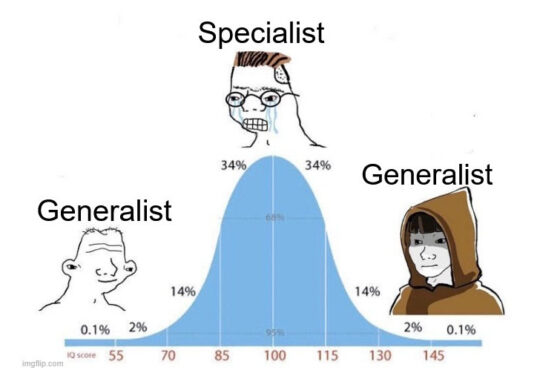
Innovation Starts in One Place, But Scales Where Resistance Is Lowest
The Universal Principles of Friction and Viscosity
The Hidden Problem of Scaling Innovation
Every few decades, innovation doesn’t just change technology, it changes where the world’s wealth, influence, and power concentrate.
Silicon Valley was once just orchards. Shenzhen was once fishing villages. Indiana was once nothing more than “flyover country.”
Today, the frontier of artificial intelligence is following the same pattern. Innovation starts in one place, but it scales where resistance is lowest.
And that brings us to a strange question:
Why are AI companies, the most advanced organizations on Earth, building data centers in places like Iceland, Norway, and Indiana… and looking hard at the Middle East?
The answer has less to do with coding breakthroughs or talent pipelines, and more to do with two invisible forces: friction and viscosity.
Why AI’s Future Is Stuck in Friction
Let’s start with the constraints.
AI is not just smart math. It’s energy-hungry infrastructure. Training frontier models eats megawatts of power, round the clock, for weeks. That’s not a metaphor. We’re talking electricity consumption equal to small cities just to run one training run.
And the West has two problems:
- Energy Costs – The U.S. and Europe face rising electricity prices, especially as grids are stressed by decarbonization and higher demand. Cheap power is scarce.
- Regulatory Restrictions – Governments pile on rules about privacy, labor, environmental impact, and even national security. Each rule might make sense, but together they act like sand in the gears of scaling.
That’s friction. That’s viscosity.
The more friction you face (local obstacles), the harder every step feels. The higher the viscosity (systemic drag in the environment), the harder it is for innovation to spread.
So AI companies, like water, like oil, like electricity, flow where friction and viscosity are lowest.
Trump’s Trip to the Middle East Wasn’t Just About Politics
Headlines framed it as politics: diplomacy, defense, and geopolitics.
But look deeper. Trump’s visit to the Middle East was also about AI and energy.
The Middle East has exactly what the West is short on:
- Abundant energy (cheap natural gas, oil, and increasingly massive solar projects).
- Fewer regulatory barriers (less resistance to rapid construction and scaling).
- Capital willing to invest (sovereign wealth funds seeking to diversify from oil).
Yes, the climate is brutal, 110°F summers are not exactly ideal for server farms. Yes, water is scarce. But cheap energy changes the math. When you can pump air conditioning into a desert-sized server hall because the electricity bill doesn’t matter, friction melts away.
Build near the sea, use seawater cooling, or pair desalination with solar, and you’ve solved another constraint.
That’s why Middle Eastern leaders aren’t just shaking hands over politics. They’re positioning their economies as the next AI hubs of scale.
How Constraints Redirect Innovation
This is not new.
In the 1970s through the 1990s, Western firms shifted manufacturing to Asia because labor was cheaper, restrictions were lighter, and scaling was easier. The innovation of assembly line manufacturing started in Detroit, but the large-scale growth and expansion happened in Shenzhen and Seoul.
Now we’re watching the same dynamic play out in real time with AI.
Innovation happens where the ideas are born. Scaling happens where resistance is lowest.
And we can see the pattern already:
- Iceland and Norway: cheap renewable hydro and geothermal power, cold climates that slash cooling costs, and low political resistance.
- Indiana: cooler climate, abundant water (Great Lakes, Kankakee aquifer), tax incentives, and a welcoming regulatory regime.
- Middle East: abundant cheap energy and governments eager to diversify economies, even if cooling and water require creative engineering.
Ethics: The Hidden Costs of Scaling
But here’s the uncomfortable truth: what looks like “low resistance” for corporations often creates high resistance from communities.
- Energy Costs: A single hyperscale data center can use as much electricity as 80,000 homes. That demand strains grids and raises costs for locals.
- Pollution: In regions powered by fossil fuels, emissions spike. Scaling AI in coal-heavy grids means more CO₂, more particulates, more climate risk.
- Water Scarcity: Cooling systems consume millions of gallons of water per year. In dry areas, that means competing with farmers and residents for the same resource.
The principle of friction applies here too: environmental degradation is a form of resistance. It might not show up on a quarterly balance sheet, but it shows up in public backlash, lawsuits, and regulatory whiplash.
So how could businesses balance this?
- Renewables: Partnering with solar, wind, and hydro reduces the carbon drag.
- Advanced Cooling: Air-cooled systems, liquid immersion, and seawater cooling reduce water friction.
- Community Partnerships: Investing in local infrastructure (schools, grids, housing) offsets social resistance.
- Transparency: ESG reporting builds trust and lowers reputational viscosity.
Profit and ethics don’t have to be enemies. Companies that anticipate second-order effects often scale more sustainably because they’ve reduced hidden forms of resistance before they become bottlenecks. And speaking personally, as someone who lives in Indiana, I see both sides of this. While data centers bring investment, I also worry about higher local energy costs, water strain, and the long-term environmental footprint they leave on the communities we call home.
The Universal Principles of Friction and Viscosity
Zoom out.
Whether we’re talking about AI data centers or manufacturing, the same principles apply.
- Friction = local obstacles. Energy prices. Regulations. Water shortages.
- Viscosity = systemic drag. The overall “thickness” of the environment — culture, policy, economics, climate.
- Flow = what happens when friction and viscosity are low. Innovation scales.
This isn’t just about business. It’s a universal law.
Scaling Principles in Life
The same dynamics that move AI to Indiana apply to your health and relationships.
1. Health
Why do bad habits scale faster than good ones?
Because the environment has low viscosity for junk food and high viscosity for healthy routines.
- Fast food: cheap, available, frictionless.
- Healthy food: expensive, inconvenient, requires planning.
Change the environment, you change the viscosity. Keep fruit visible, prep meals, join a gym near home. Suddenly, good habits scale.
2. Social Life
Relationships flow where trust and reciprocity are highest.
- Surround yourself with people who reciprocate support and value → relationships deepen and spread.
- Invest in trust and mutual benefit → communities scale effortlessly.
Trust and reciprocity act as the lubricant that lowers friction in social life, allowing networks to expand just as innovation does in business.
3. Business
Every constraint is friction. Every regulation, every bottleneck, every shortage of talent.
Every macro environment is viscosity. Some markets are fluid, some are thick and heavy.
Those who design environments with lower friction and lower viscosity win.
Designing Environments Where Innovation Flows
If you want to understand where the world is going, stop asking what’s new. Start asking:
Where is resistance low? Where is viscosity low?
That’s where the next wave of innovation, wealth, and influence will cluster.
For AI, the answer is: Iceland, Norway, Indiana, and yes, the Middle East.
For you, the answer might be: redesigning your environment so that the things you want to scale (health, relationships, business) flow with less resistance.
Key Principles
- Friction = the local obstacles to scaling (energy, cost, regulation, social pushback).
- Viscosity = the systemic drag of the environment (cultural, geographic, or infrastructural thickness).
- Flow = the natural scaling that occurs when friction and viscosity are minimized.
- Innovation always starts where ideas are born but scales where resistance is lowest.
- The same principles govern business, health, and social life.
Key Takeaways
- AI companies face two huge constraints in the West: energy costs and regulatory restrictions.
- That’s why they’re building in Iceland, Norway, and Indiana, and eyeing the Middle East despite climate challenges.
- History rhymes: manufacturing moved east (1970s–1990s) and now AI follows low-resistance environments.
- Data centers bring ethical concerns (pollution, energy costs, water usage) that must be balanced with profit.
- Universal principles of friction and viscosity explain not just business scaling but also personal health and social life.
- If you want to thrive, design environments where friction is low and viscosity is fluid in the direction of your goals.




